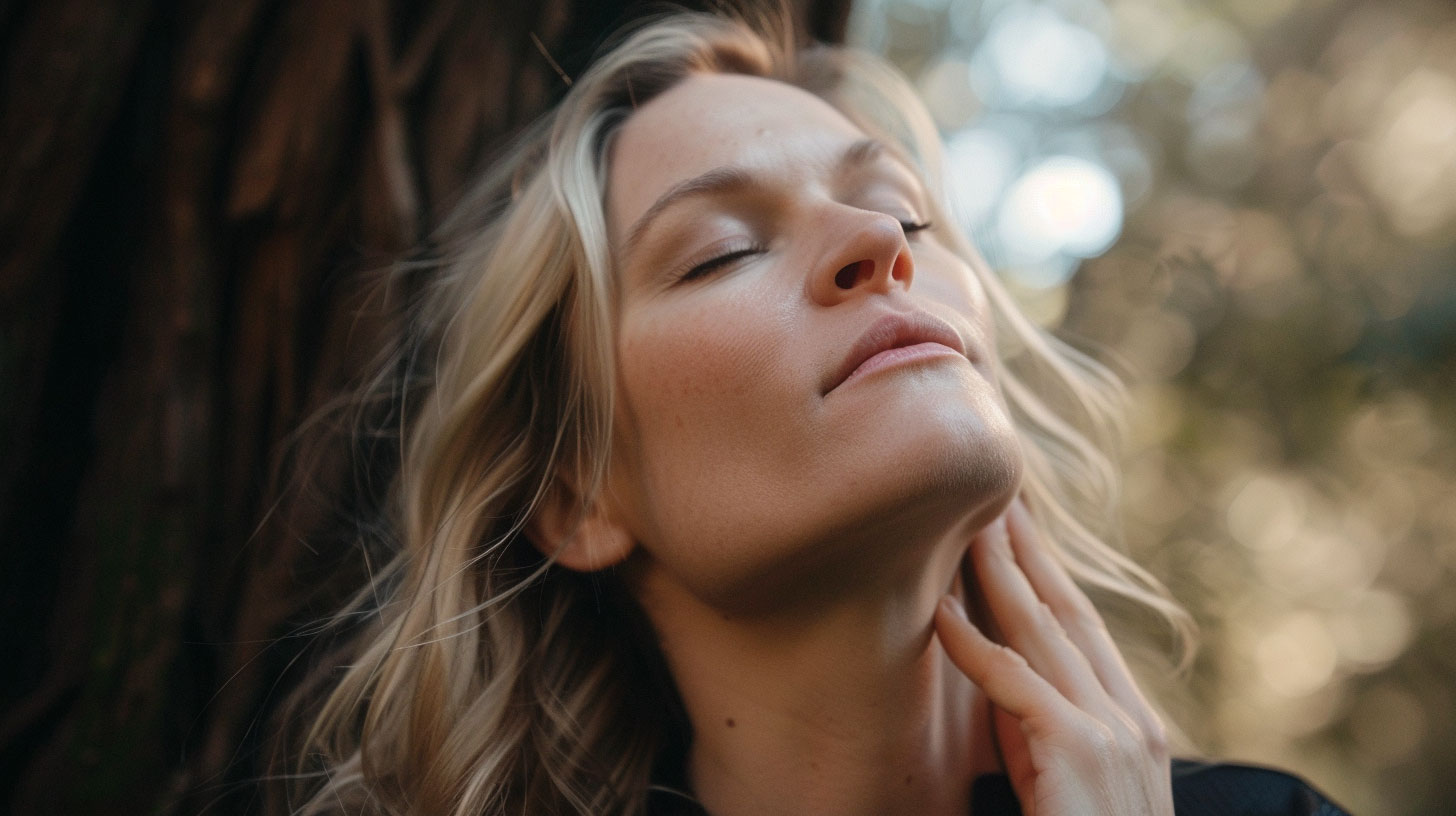Table of contents
Understanding Forest Bathing
As we delve into the world of forest bathing, it’s essential to grasp its roots and the remarkable health advantages it offers. This practice isn’t just a walk in the woods; it’s a transformative experience that connects us deeply with the natural world.
Origins and Principles
The concept of forest bathing, or shinrin-yoku, originates from Japan. It translates to “taking in the forest atmosphere” or “forest bathing.” Developed in the 1980s, it’s a cornerstone of preventive health care and healing in Japanese medicine. The principle is simple yet profound: by immersing ourselves in the forest, we engage with nature in a mindful way, absorbing its essence through our senses.
Forest bathing is not about the physical exercise gained from hiking or jogging; rather, it’s about allowing the natural surroundings to envelop us, calming the mind and soothing the soul. The practice encourages us to breathe deeply, observe the intricate details of the forest, and reconnect with nature’s rhythms. It’s a form of forest therapy that’s accessible to all, requiring no equipment but our presence and willingness to let go of the hustle of daily life.
Health Benefits
Engaging in forest bathing exercises provides a multitude of health benefits, both physical and mental. Research has shown that this practice can lead to significant reductions in blood pressure and improvements in autonomic and immune system functions. This immersion in nature has a calming effect on the body, promoting a state of relaxation that’s often lost in our fast-paced society (National Geographic).
Mentally, the serene environment of a forest can help alleviate symptoms of depression and improve overall mood. Studies have demonstrated that participants consistently report a decrease in negative mood and depressive symptoms after a session of forest bathing. Moreover, people with depressive tendencies often experience even greater improvements in mood (Source).
| Health Aspect | Effect of Forest Bathing |
|---|---|
| Blood Pressure | Decrease in systolic and diastolic values |
| Mood | Improvement in negative mood and depressive symptoms |
| Immune Function | Enhancement of immune system markers |
These findings underscore the significance of connecting with nature for our well-being. By integrating forest bathing into our routine, we open ourselves up to the natural healing properties of the environment, leading to a more balanced and healthy life.
For those interested in exploring this practice, our forest bathing guide offers insights and steps on how to embark on your own forest bathing experience. Whether you’re seeking forest bathing for stress relief or simply wish to enhance your mindfulness in nature, this gentle yet powerful exercise is a gateway to revitalizing your spirit.
Preparing for a Forest Bathing Session
Embarking on a journey of forest bathing, or shinrin-yoku, is not just a walk in the woods; it’s a deliberate and mindful experience that allows us to immerse ourselves in the natural environment. As we gear up for this healing practice, let us guide you through the essentials of getting ready for a session that refreshes your body, mind, and soul.
Choosing Your Environment
The first step in preparing for a session is selecting the right environment. While any natural setting offers benefits, for the most profound impact, we recommend finding a forest that resonates with you. Ideally, a place rich in biodiversity, where the air is filled with the soothing scents of nature, will enhance the experience. According to Healing Forest, evergreens like pine, cedar, spruce, and conifers are especially beneficial due to their high output of phytoncides—plant chemicals that significantly reduce stress and improve overall well-being.
When we choose our environment, we also consider accessibility and personal comfort. You don’t need to venture far; sometimes, the best spots are closer than you think. Look for a forested area that is safe and allows you to wander without the fear of getting lost. It should be a space where you can be at peace, undisturbed, and free to connect with nature.
What to Bring
While forest bathing is about simplicity and shedding the complexities of our daily lives, there are a few items we suggest to enhance your forest bathing experience:
- Comfortable clothing suitable for the weather and terrain
- Sturdy, yet comfortable shoes for walking
- A small backpack to carry essentials
- A water bottle to stay hydrated
- Insect repellent, if necessary, for your comfort
- A journal or notebook to capture your thoughts or sketch the landscape
- A camera for taking photos as a form of creative expression, though this is optional as the focus should be on immersion
- A lightweight, portable mat or towel if you plan to sit or lie down
Remember, the goal is not to exert ourselves but to wander slowly, savoring the sights, smells, and sounds of the forest. We leave behind phones and other distractions to fully engage with the present moment. This list is not exhaustive, and we encourage you to bring any personal items that might aid in your relaxation and comfort. However, keep it minimal to avoid encumbrance.
As we prepare for our forest bathing session, let’s remind ourselves of the intention behind this practice. It’s an opportunity to step away from the hustle and bustle of modern life and to reconnect with nature. We embrace the tranquility and healing power of the forest, allowing it to envelop us in its serene embrace. Let’s gather our items, choose our spot, and set forth on a path to rejuvenation and peace.
Engaging Your Senses
In the practice of forest bathing, or shinrin-yoku, we immerse ourselves fully in the embrace of nature, allowing our senses to lead us to a deeper connection with the environment. Engaging our senses is not just a part of the experience; it’s the essence of it. Let’s embark on a sensory journey through the forest.
Sight and Sound
As we enter the forest, we allow our eyes to adjust to the mosaic of greens and the dappled sunlight filtering through the leaves. Observing the myriad hues, the gentle sway of branches, and the dance of shadows on the ground, we become witnesses to nature’s artistry. Studies have shown that simply taking in the beauty of our surroundings can significantly reduce stress and negative emotions, enhancing our mental health (NCBI).
The symphony of the forest is just as captivating. We tune into the rustling leaves, the whispering wind, and the melodic bird calls. This natural orchestra invites us to a state of tranquility, as highlighted by research underscoring the calming effects of nature’s acoustics (NCBI). For a guide on how to sharpen your listening skills during forest bathing, visit our forest bathing guide.
Smell and Touch
The fragrance of the forest air is a blend of earth, leaves, and wood—a natural perfume that is both grounding and invigorating. This olfactory experience can transport us to a world of memories and emotions, as scent is closely linked to the brain’s centers for emotion and memory. Let’s breathe deeply, allowing the forest’s aroma to fill our lungs and soothe our spirits.
Touch connects us physically to the forest. The textures of bark, the coolness of a stream, or the softness of moss under our fingertips awaken our tactile awareness. This tactile engagement helps us to feel part of the natural world, fostering a sense of belonging and interconnectedness with the environment.
Taste and Mindfulness
Though taste may not be the first sense that comes to mind in forest bathing, it plays a subtle but enriching role. Perhaps we sample the sweetness of a berry or the freshness of spring water, always ensuring that what we consume is safe and permissible. These flavors can deepen our immersion in nature and heighten our sensory experience.
Mindfulness is the thread that weaves all these sensory threads together. It invites us to be wholly present, absorbing each sensation and moment with intention. As we engage each sense, we practice
By engaging our senses of sight, sound, smell, touch, and taste, we tap into the therapeutic powers of the forest. This multisensory approach is what makes forest bathing a holistic and rejuvenating practice, one that offers numerous health benefits and stress relief. Each visit to the forest is a unique forest bathing experience, a personal journey of discovery and renewal.
Forest Bathing Exercises
As we immerse ourselves in the tranquil sanctuary of the forest, let us explore a variety of exercises designed to deepen our connection with nature. These forest bathing exercises, or shinrin-yoku, offer a pathway to tranquility and restoration.
Sensory Walks
Sensory walks are a cornerstone of the forest bathing experience. As we wander through the wooded paths, we engage each of our senses to fully absorb the essence of the forest. Here’s how we can embark on a sensory journey:
- Visual Exploration: Seek out the variety of colors, patterns, and movements within the forest. Notice the light filtering through the leaves and the dance of shadows on the ground.
- Auditory Awareness: Close your eyes and focus on the symphony of the forest—birdsong, rustling leaves, and the whisper of the wind.
- Tactile Connection: Feel the textures around you; the rough bark of trees, the softness of moss, and the solidity of rocks.
During our walk, we pause at intervals to absorb our surroundings, allowing the forest’s natural beauty to fill our senses. This practice can be further enriched by following a forest bathing guide who can facilitate our sensory exploration.
Guided Meditation
Guided
- Find a comfortable spot to sit or stand.
- Close your eyes and take several deep breaths, inhaling the fresh forest air.
- Visualize the energy of the forest entering your body with every breath.
- As you exhale, release any tension or stress you may be feeling.
Guided meditations often involve visualization techniques that encourage us to form a deeper bond with nature. We might visualize our roots intertwining with the roots of the trees, symbolizing our interconnectedness with the forest.
Deep Breathing Techniques
Deep breathing is a powerful tool to enhance the forest bathing benefits, especially when practiced in the crisp, clean air of the forest. Here’s a technique we can incorporate:
- Stand quietly and comfortably, perhaps with a hand on your abdomen.
- Inhale slowly through your nose, feeling your hand rise as your abdomen expands.
- Hold this breath for a few moments.
- Exhale slowly, feeling your hand fall as your abdomen contracts.
Practicing deep breathing not only aids in relaxation but also ensures that we are oxygenating our blood, improving our immune system, and invigorating our brains. This practice can be particularly invigorating during the winter months when the air is crisp and rejuvenating.
By incorporating these exercises into our forest bathing experience, we can achieve a sense of peace and well-being. It’s not just about the physical act of walking through the forest, but about truly connecting with nature in a way that revitalizes our spirit and enhances our health. Let us take this time to slow down, breathe deeply, and savor the magic of the forest with every sense.
Incorporating Nature in Daily Life
As we continue to uncover the restorative power of nature, it’s clear that we can all benefit from integrating elements of forest bathing into our everyday lives, not just during occasional retreats to the wilderness. Let’s explore how we can create a routine that incorporates nature and discover nature-inspired activities that can be enjoyed in the comfort of our homes.
Creating a Routine
Developing a routine that includes nature can have profound effects on our well-being. Even without access to dense forests, simply being exposed to elements such as sunlight and the ground provides therapeutic and preventative benefits (Forest Bathing Central). Here are some ways to incorporate nature into our daily routines:
- Morning Sun Greetings: Begin your day with a few minutes basking in the morning sun, which can boost your mood and energy levels.
- Nature Walks: Schedule regular walks in nearby parks or gardens to connect with nature. Even a brief lunchtime stroll can be rejuvenating.
- Plant Care: Tend to houseplants or start a small herb garden to bring the calming effects of nature indoors.
- Evening Wind-Down: Conclude your day by stepping outside to enjoy the evening air, which can help signal to your body that it’s time to unwind.
By carving out time for these activities, we not only enhance our connection with the natural world but also foster a more mindful and balanced life.
Nature-Inspired Activities at Home
Our homes can become sanctuaries that reflect the tranquility of a forest environment. Here are a few suggestions for nature-inspired activities that can be easily incorporated at home:
- Indoor Forest Corners: Create a dedicated space with potted plants, natural elements like stones or wood, and perhaps a small water feature to mimic the serenity of a forest setting.
- Aroma of the Woods: Use essential oils or natural incense with scents like pine, cedarwood, or eucalyptus to bring the forest’s aroma into your living space.
- Natural Sounds: Play recordings of forest sounds, such as birdsong or rustling leaves, to create an ambience of being amidst nature.
- Forest Visualization: Practice visualization exercises where you imagine yourself in a peaceful forest, engaging all your senses to deepen the experience.
By integrating these practices, we can maintain a constant connection with nature’s healing essence. Whether it’s through nurturing plants or transforming a corner of our home into a mini-forest, these small acts can have a significant impact on our mental and emotional health.
Engaging regularly with nature-inspired activities not only nourishes our spirits but also reminds us of the importance of preserving the natural world. As we benefit from these practices, let’s also commit to being stewards of the environment, protecting the forests that inspire us and offer forest bathing benefits for our holistic health.
Remember, the essence of forest therapy isn’t confined to the forest; it’s about fostering a deep, restorative connection with all living things, wherever we are. By embracing these routines and activities, we ensure that the spirit of the forest always has a presence in our lives, guiding us towards greater mindfulness in nature and a more harmonious existence with the earth.
Overcoming Common Challenges
As we delve into the practice of forest bathing, we recognize that there are hurdles that may seem to stand in the way of our connection with nature. Seasonal changes and urban environments can pose challenges, but with a few adjustments, we can still reap the profound benefits of forest bathing.
Seasonal Considerations
Winter can often deter us from stepping outside and engaging in forest bathing exercises. However, embracing the cold can bring a unique set of rewards. The crisp, minty air of winter is invigorating and beneficial, oxygenating our blood, boosting our immune system, and enhancing brain function (Forest Bathing Central).
To make forest bathing a year-round practice:
- Adapt your wardrobe: Layering up with warm clothing allows us to comfortably explore and immerse in the tranquility of a winter forest.
- Embrace the winter air: Incorporating breath work into our practice lets us take full advantage of the chilly air’s restorative properties.
- Prioritize your practice: Recognize that the benefits of forest bathing for stress relief are too significant to overlook, even in colder seasons.
For those of us who face the chill of winter, here are some activities specifically suited for the season:
- Concentric Circle Exercise: Trace the rings of a tree stump or follow the patterns of frost to meditate on the cycles of nature.
- Reverse Senses: Focus on less dominant senses like smell and touch, perhaps by engaging in a “Nature Scratch and Sniff” with pine needles, bark, and herbs (Forest Bathing Central).
Accessibility and Urban Settings
We often associate forest therapy with vast wilderness, but what about those of us in urban environments? The good news is that we don’t need a dense forest to experience the magic of nature. Even a small patch of greenery or a city park can serve as our gateway to mindfulness in nature.
To incorporate nature into our urban lives:
- Find your nearest nature spot: Identify parks, gardens, or river paths within your city that can offer a space for immersion in nature.
- Create a nature nook at home: Introduce plants, natural materials, and even recordings of nature sounds to bring the essence of the forest to you.
- Practice balcony bathing: If you have a balcony or a terrace, use it for a mini forest bathing experience, focusing on the sky, the breeze, and any visible greenery.
By recognizing that the essence of forest bathing lies in our sensory connection with the natural world, we can find ways to adapt the practice to our circumstances. Whether we are bundling up for a winter walk or finding tranquility on a park bench, the key is to keep nurturing our bond with the environment. In doing so, we continue to revitalize our spirit, no matter the season or setting.
FAQs (Frequently Asked Questions)
Forest Bathing, or Shinrin-Yoku, is a Japanese practice developed in the 1980s, emphasizing mindful immersion in nature. It’s not about physical exercise but about connecting deeply with the natural world through our senses, offering significant health benefits such as reduced blood pressure and improved mood.
Choose a biodiverse, accessible forest environment. Bring comfortable clothing, sturdy shoes, water, insect repellent, a journal, a camera (optional), and a mat or towel for sitting. The focus is on slow, mindful exploration without digital distractions.
Sensory Walks: Engage all senses to absorb the forest’s essence.
Guided
Deep Breathing: Practice breathing techniques to enhance relaxation and health benefits.
Yes, even urban parks or small green spaces can serve as effective sites for forest bathing. The practice is adaptable to various environments and can be incorporated into daily routines to maintain a connection with nature.




